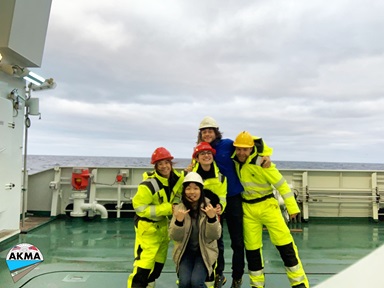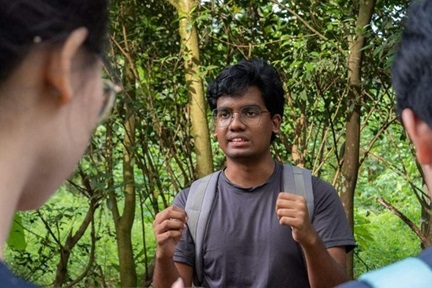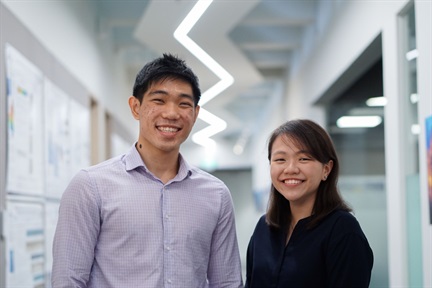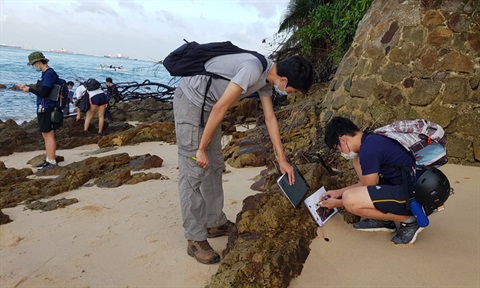ASE collaboration with Singapore Centre for 3D Printing to generate rocks for teaching in the absence of field trips
Overseas field courses are a core part of ASE’s programmes, but with the pandemic preventing international travel, ASE instructors have had to come up with new ideas. A collaboration between ASE and the Singapore Centre for 3D Printing (SC3DP) provided a unique solution for geoscience classes at ASE this semester, generating 3D printed rocks for teaching.
Normally a team of ASE professors would bring the first-year ASE students to Bali to be exposed to each of ASE’s specialisations: Society, Ecology and Geosciences. But with the field trip cancelled due to the pandemic, Assoc Prof Benoit Taisne initiated a collaboration with SC3DP’s Building and Construction programme. In the course of research, the team had successfully 3D printed furniture, aesthetic displays, and prefabricated bathroom units. It was a novel challenge to 3D print rock models as an aid for experiential learning.
Anyone who studied real rocks in the field will know that they have a range of subtle details and in this case also dipping plans, which proved a challenge for designing the robotic paths for 3D printing. The relatively low resolution of concrete (the material used for printing) also limited the amount of details. But the SC3DP team managed to come up with some impressive blocks of approximately 1200 kg, with optimised facade design, inner structure and material usage.
 From design to finished product and use in teaching. Photo credit, from left: Moon Young Jeong, Lee Wei Kit, Benoit Taisne.
From design to finished product and use in teaching. Photo credit, from left: Moon Young Jeong, Lee Wei Kit, Benoit Taisne.
The rock model was successfully used for teaching during ES1006 Introductory field experience in May and June 2021, during which the students learn a concept in geology called ‘Strike and Dip’. Students measure the indentation between blocks using their compass as well as any tricks that they may find to extend the surface, and then use their measurements to record the Strike and Dip of the rock structure.
The 3D printed rocks have been a valuable resource in the absence of field trips, enabling entry level students to walk around the block and helps them visualize in 3D and understand the concept of ‘Strike and Dip’. This is a great example of how travel restrictions have boosted creativity and unexpected collaborations at ASE and SC3DP, NTU.
 Rock used during previous field courses in Bali, student measuring rock in the field, students measuring the 3D printed rock. Photo credit (from left): Ang Wan Qi, Gareth, Benoit Taisne.
Rock used during previous field courses in Bali, student measuring rock in the field, students measuring the 3D printed rock. Photo credit (from left): Ang Wan Qi, Gareth, Benoit Taisne.
To find out more about the 3D printing process, watch:
- This time lapse video of how a teaching rocks was 3D printed: https://www.facebook.com/ntuaseofficial/videos/338941757577041
- This video of how a bathroom unit was printed: https://www.ntu.edu.sg/sc3dp/research-capabilities/research-projects/sc3dp-unveils-a-full-sized-3d-printed-concrete-prefabricated-bathroom-unit-(pbu)
Thanks to Jeong Moon Young, Li Mingyang, Weng Yiwei and Wong Teck Neng, Lee Wei Kit, and Benoit Taisne for contributing to the text and providing information for the story.




.tmb-listing.jpg?Culture=en&sfvrsn=f3ea25b7_1)


